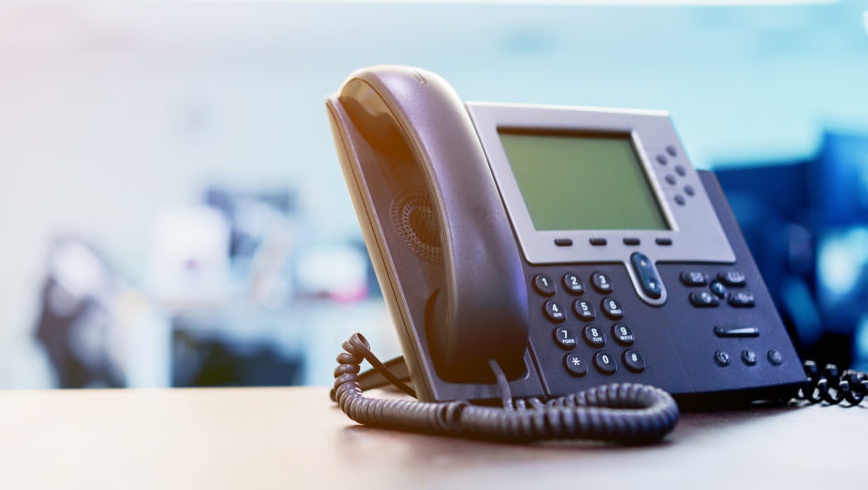
Finding strategies to enhance customer service can help you retain current customers while also boosting sales for your company.
By enabling callers to obtain the information they require without having to place their calls on hold or transfer them, business features like auto attendants streamline the customer experience.
Here, we’ll discuss the top auto attendant phone systems that maintain high levels of first call resolution and client satisfaction.

An auto attendant is what?
Based on the caller’s reaction to the automated greeting or menu system, an auto attendant is a feature of commercial phone systems that answers and routes incoming calls.
They route callers to the best agent or department depending on information they supply via speech, dial pad touchtone entry, or even according to the precise phone number dialed. They are also known as virtual receptionists or auto-receptionists.
After the caller selects the department or agent they require, multi-level auto attendants immediately play pre-recorded messages that provide them with further options.
Auto attendants offer a high level of consumer self-service that frequently keeps them from having to deal with a live agent at all, in addition to assisting agents during periods of peak call volume.
This frees up agents so they can help clients with trickier problems or make more outbound sales calls. Auto attendants also: By adhering to pre-set call paths (also known as “call flows”):
- Assist callers in identifying the department or individual they should interact with.
- Stop requiring incoming callers to hang up and redial phone numbers.
- If no agents are available, transfer calls to voicemail or other phone lines.
- Make inbound calls automatically transferred.
- Give callers important information, such as times, locations, or COVID updates.
- Until a live representative is available, hold calls.
Installing an Auto Attendant
Creating an auto attendant differs depending on the provider. While some allow you to record greetings more easily using text-to-voice, others demand that you start from scratch with your scripts and audio files.
The last thing you want is to have a poor auto-attendant flow that irritates a client when they are routed because auto-attendant scripts are your means of connecting with the customer.
We’ve included a general setup procedure for your automated attendant program below, step by step:
- Picking the preferred call handling technique (all calls routed to auto-attendant vs calls not answered after a set number of rings, etc.)
- Set up business phone numbers for the department and/or individual agents, and include any additional call forwarding numbers (cell phone number, additional agent phone number, etc.)
- Call menu choices, voice mailbox messages, and system greetings should be written down and recorded (or entered using text-to-speech technology).
- Put together call groups (groups of agents with similar skillsets, working hours, departments, etc.).
- Decide whether or not to have an operator (where the caller can press “0” or another number to be instantly forwarded to the main call menu, voicemail box, etc.).
- Establish operating times or schedules for day and night.
- Fix dates and times for holiday greetings.
- Set up timeout settings so that, after a predetermined amount of time, calls that go unanswered will be redirected to the main menu, voicemail, forwarded to another phone number, or hung up.
- Save all auto attendant preferences.
It should be noted that the majority of systems enable administrators to input/record both “main menu” greetings and personalized greetings for particular departments, holidays, agents, etc.
The particular phone numbers or extensions for each department will also be required. Some systems allow users to dial an extension directly without going through the complete menu thanks to first-level extension dialing.

What distinguishes IVRs from auto attendants?
An IVR (Interactive Voice Response) system and an auto attendant primarily vary in that IVRs often provide a higher level of client self-service with more sophisticated configuration and input choices.
IVRs may have more sophisticated drag-and-drop call flow design tools, intelligent assistants, ring tactics, or call routing algorithms. This is not meant to diminish the value of auto-attendants, which are a far simpler and quicker method of automating call routing.
Businesses that don’t require automatic voice recognition, natural language processing, or other conversational AI functionalities might benefit from auto attendant features.
An auto-attendant has capabilities like day and night mode despite being less advanced. Your company may set up day and night modes such that all incoming calls ring the number four times before being transferred to the auto-attendant. Calls will be automatically routed to the auto-attendant if night mode is activated after a specific hour because there are no agents present.
Benefits of Employing Auto Attendants
Although using an auto attendant is a terrific method to enhance the initial impression clients have of your business, there are other advantages to doing so as well:
- Improved Call Handling A huge number of calls will be handled concurrently when routed through an attendant system, improving customer satisfaction. Additionally, it conveys a higher level of professionalism during a customer’s initial contact with your company.
- 24/7 Customer Access – When your office is closed, calls can be forwarded to a voicemail or another site via auto attendants. This means that if you don’t answer the phone or get calls outside of work hours, you won’t lose customers. For agents who work remotely, calls are even forwarded to mobile phones using solutions like Find Me/Follow Me (remote call forwarding).
- Cost-effective – You won’t have to hire a secretary to answer calls full-time if you have a routing system like this. You can save a few thousand dollars by using an auto attendant who is included in a membership to handle that work.
- Third-Party App Integration – CRM integration is crucial to the development of strong customer relationships. With the use of these integrations, an agent can access client data while the call is being forwarded by the auto attendant, better preparing them for the incoming call.
The Drawbacks of Auto Attendants
Not all businesses will benefit equally from these solutions. They do have drawbacks, and based on these, you may decide that you prefer a more sophisticated call routing system or a live person answering the phone. The following are some areas where these systems are lacking.
- Initial, impersonal interactions – According to research from Usabilla, 55% of clients find it more comfortable to speak to a real person rather than a computer. Some callers may hang up before they ever get a chance to speak to an agent using an attendant system because the customer does not use voice input to correctly route customers.
- Design Error Leads to Abandonment – It takes some skill to arrange your menus, and it’s simple to give them a bad experience. In general, you don’t want lengthy menus that the customer might find confused. Additionally, the customer should always have a mechanism to get in touch with an agent. In a manner similar to how IVR call flows are set up, effective attendant menus must be simple to use.
- Wrong Button Presses – If a customer presses the wrong button out of indifference or just because they are impatient, they may reach the wrong agent. Rerouting the call to the appropriate department will therefore take more time and money than the attendant was intended to save. Before speaking with an agent, the consumer could become frustrated if they are forced to start again at the menu’s beginning.



